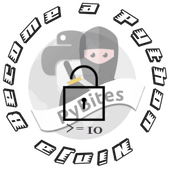First steps with WordPress
Wow this is nice. I needed a more automatic way to blog, but I didn't want to separate it from my main website.
I found a easy + complete solution which I will detail below. My initial skepticism of CMS was blown away seeing the power and flexibility of Wordpress. I only have "touched" the surface, there is much more to find out ..
Quick howto:
a- install wordpress on your domain server. Just upload the wordpress-2.9.x zipfile and put it in a dedicated directory, for example www.mydomain.com/blog. The setup is really easy: create a database and provide the db credentials via the initial webpage. it is recommended to keep this info outside public_html of course
b- pick a nice theme and customize it. There are many beautiful themes and with a little tweaking you have something nice in 15-30 min.
c- embed your latest posts into your existing site with a few lines of php: query_posts('showposts=xx').. .. see this howto
d- (optional) install colorbox, a very nice Jquery plugin, that allows you to show the Wordpress blog in an iframe so that visitors stay on your site. This is a personal flavor, this way I didn't have to make navigation links from my wordpress page back to my site and the whole design just feels more consistent.
